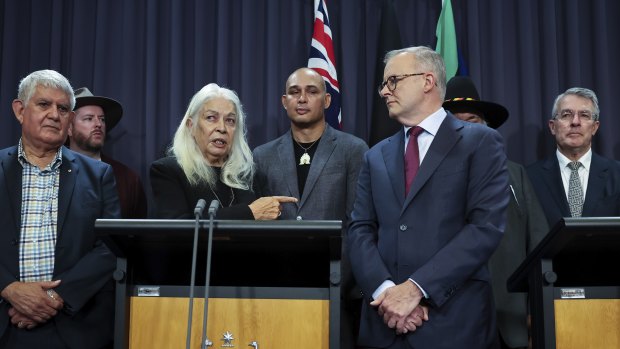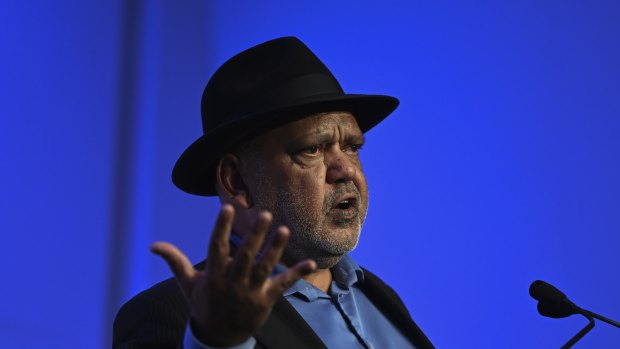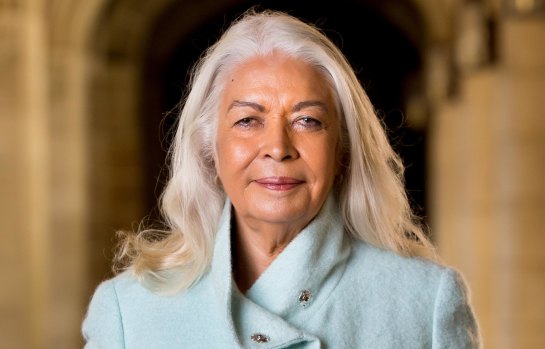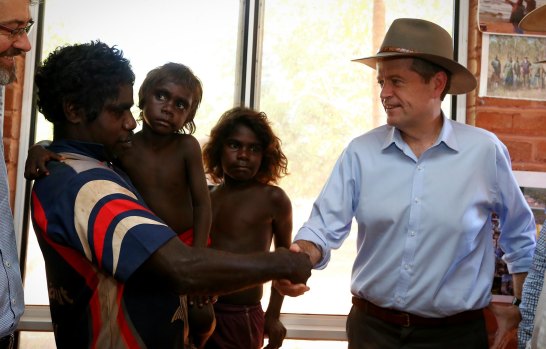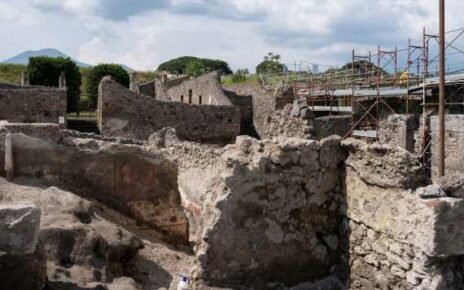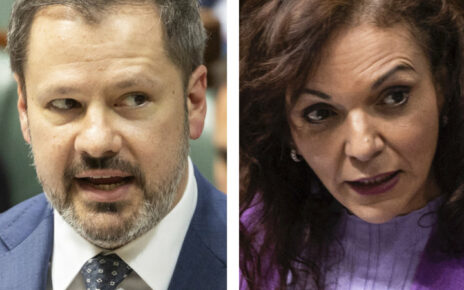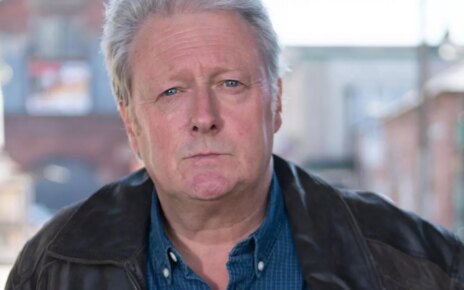Save articles for later
Add articles to your saved list and come back to them any time.
Indigenous leader Noel Pearson says he anticipated a scare campaign over the Voice’s lack of detail but insists Peter Dutton’s demand for more information is unrealistic and political, even though Pearson himself previously supported releasing the draft legislation before going to a referendum.
The contest over detail flared up on Monday when the opposition leader claimed the lack of information was the number one reason approval for the Voice was plummeting.
Anthony Albanese with leading Indigenous figures including Marcia Langton in parliament in March.Credit: Alex Ellinghausen
Prime Minister Anthony Albanese has repeatedly said the details of how the Voice would operate would be worked out after the referendum.
He has previously said he was “learning from history” to avoid a repeat of the failed 1999 republic referendum, when questions about the model cruelled the campaign.
But Dutton insisted at a press conference on Monday that “all of the analysis that I read, commentators from the left and right … they miss – most of them – this vital point: It’s turned from 60 per cent support to 40 per cent support because the prime minister won’t give the detail”.
Dutton did not mention that no referendum has ever been won without bipartisan support.
Then opposition leader Bill Shorten pledged in February 2018 to legislate the Voice before a referendum to prove how it would work and blunt any scare campaign about its power and scope.
A spokeswoman for Shorten said he supported the government’s referendum approach.
Between 2018 and 2021, Shorten, Pearson, Indigenous leader Marcia Langton and former High Court chief justice Murray Gleeson each stressed the importance of either creating the Voice via legislation first or releasing an exposure draft bill to educate the public.
But while the government has released some design principles for the Voice, the plan now is to flesh out the Voice legislation after the referendum in a joint parliamentary committee.
Noel Pearson is campaigning intensely across the country for the Voice to parliament.Credit: Dan Peled
Pearson said in an interview with this masthead that his previous support for the release of an exposure draft bill, stated most recently in March 2021, was designed to guard against a fear campaign as the Morrison government was contemplating the Voice.
On Monday, he said that drafting the bill may have “taken up to two years”, compromising Labor’s election promise to hold a referendum in its first term, and would not have helped win Dutton’s support.
“We anticipated range of objections including this unrealistic demand that all the detail be furnished up front,” he said. “You can propose model A, B or C, but they are not the detail. It was always subject to parliament.”
Professor Langton, co-author of the report laying out proposed design for a Voice, confirmed her July 2021 remarks that the Voice should be legislated.
Professor Marcia Langton.
When asked by this masthead on Monday who took the decision to push ahead with the referendum without legislating, she said: “Who else makes these decisions? Governments of the day make decisions about legislation.”
Langton said some in the Yes camp believed legislating the Voice first could diminish the imperative to hold a referendum to put the Voice in Australia’s founding document. She said this argument had some merit.
“I was acting on the views put to me by hundreds of Aboriginal and Torres Strait Islander people I spoke to,” she said, explaining her July 2021 statement that “the almost unanimous view of our 52 members [of the Calma-Langton Voice design panel] is that our proposal should be legislated as soon as possible.”
“There’s no use crying over spilt milk. Here we are in a campaign in which Dutton has run a slogan of ‘if you don’t know, vote No’… He could have worked in a bipartisan way to encourage legislation, but he’s been a wrecker.”
Bill Shorten was leader when Labor adopted the Voice as part of its reconciliation policy.Credit: Alex Ellinghausen
In a 2018 Closing the Gap speech, Shorten committed Labor to finalising Voice legislation if it won the 2019 election, saying it would be “easier for a referendum to succeed and harder for a scare campaign to be run if we already have lived legislative experience of such a body”.
In 2019, Gleeson said: “Australians, and parliament itself, would want to see what the body looks like, and hear what the Voice sounds like, before they vote on it.”
His speech supporting a Voice was hailed by Indigenous leaders including Megan Davis as a landmark event because Gleeson is viewed as one of Australia’s leading conservative jurists.
Pearson said after Gleeson’s speech: “We’re going to design all of the detail, present it to the Australian people and the parliament and say, this is what we’re talking about in terms of how the Voice would operate, what it would do and so on. And that has to be done prior to the conduct of a referendum.”
More recently at a keynote National Museum speech in March 2021, Pearson said: “Let us complete the legislative design of the Voice, and produce an exposure draft of the bill so that all parliamentarians and the members of the Australian public can see exactly what the Voice entails.”
On Monday, Pearson said this speech was focused on spurring the Morrison government to action.
Liberal Voice supporter Andrew Bragg said the Albanese government had imperilled the referendum due to its “evasive political management”.
“My yes vote on 14 October should have been one of many more Liberal Yes votes. Sadly, Labor’s decision to avoid publishing an exposure draft bill, amongst other things, has killed the centre ground. They have learned nothing from marriage in 2017,” he said.
Cut through the noise of federal politics with news, views and expert analysis from Jacqueline Maley. Subscribers can sign up to our weekly Inside Politics newsletter here.
Most Viewed in Politics
From our partners
Source: Read Full Article
